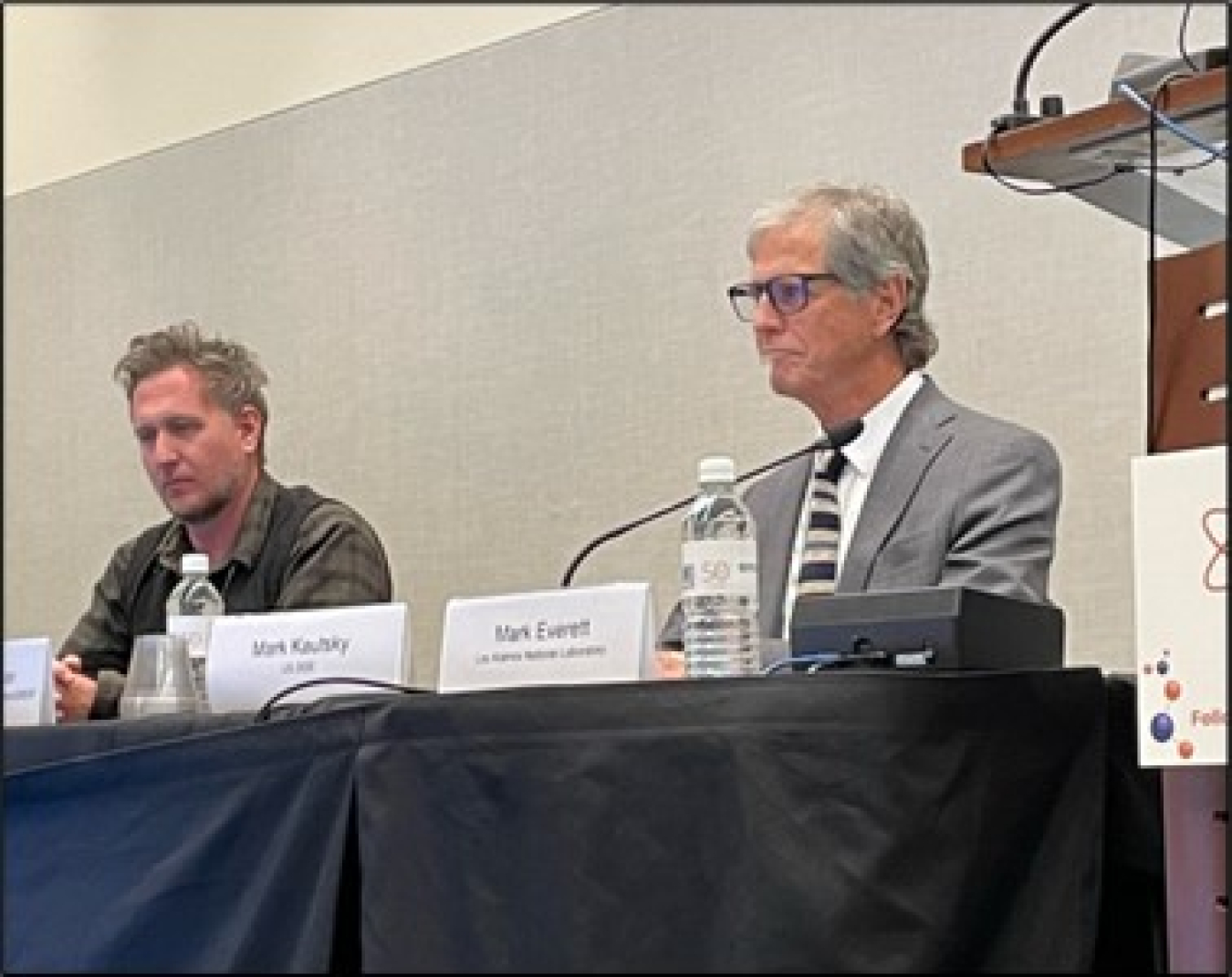LM’s Kautsky, Young play key roles in technical discussions
March 13, 2024
LM’s Mark Kautsky, right, and LM Support Partner Morgan Williams participated in a panel of federal and contractor staff who provided information on the different types of disposal cell caps and covers and their performances Tuesday at the 50th Waste Management Symposia in Phoenix.
Many U.S. Department of Energy (DOE) cleanup sites have waste disposal facilities with a variety of designs, and those various approaches are routinely monitored and analyzed.
Mark Kautsky — program manager for the Office of Legacy Management’s (LM) Uranium Mill Tailings Radiation Control Act program — was a co-chair of a panel of federal and contractor staff who provided information on the different types of caps and covers and their performances Tuesday at the 50th Waste Management Symposia in Phoenix.
Kautsky said one of the purposes of the conference is information sharing, and he said the panel was a cross-cutting issue.
“The performance of cell caps and covers is a topic of interest to many professionals across the DOE landscape,” Kautsky said, whose panel drew a full house of nearly 100 people. “The information provided by these subject matter experts is valuable and can assist in future approaches as we work to protect human health and the environment.”
The panel consisted of LM Site Manager Mary Young, LM Support Partner Morgan Williams, University of Wisconsin-Madison Distinguished Professor Emeritus Craig Benson, and Newport News Nuclear BWXT Drilling Program Manager David Diehl.
Young provided historical information and outlined technical aspects and challenges of the disposal facility near Rifle, Colorado. Williams, a scientist with LM’s Applied Studies and Technology program, outlined highlights of long-term studies involving radon and risk.
Benson provided a series of lessons learned from various types of disposal facilities. He concluded that water balance covers perform well in dryer climates but are not effective in wetter climates; that conventional covers with clay barriers are not effective in any climate; and conventional covers with composite barriers function well in all climates.
Diehl provided historical information and outlined technical aspects of an evapotranspiration cover at the Los Alamos site in New Mexico.
Mark Everett, program manager at Los Alamos National Laboratory, was also a panel co-chair.
“This was an engaging panel with a robust discussion during the question-and-answer session,” Kautsky said. “This panel had a range of environmental professionals and resulted in the kind of exchange that provides value for everyone.”

